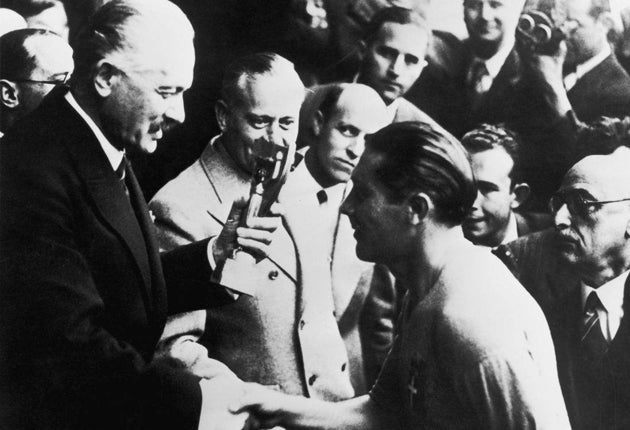The Timeline: Trophies

Your support helps us to tell the story
From reproductive rights to climate change to Big Tech, The Independent is on the ground when the story is developing. Whether it's investigating the financials of Elon Musk's pro-Trump PAC or producing our latest documentary, 'The A Word', which shines a light on the American women fighting for reproductive rights, we know how important it is to parse out the facts from the messaging.
At such a critical moment in US history, we need reporters on the ground. Your donation allows us to keep sending journalists to speak to both sides of the story.
The Independent is trusted by Americans across the entire political spectrum. And unlike many other quality news outlets, we choose not to lock Americans out of our reporting and analysis with paywalls. We believe quality journalism should be available to everyone, paid for by those who can afford it.
Your support makes all the difference.5BC-2nd century, Greece
Some of the most prestigious trophies in the ancient world were awarded at the Panathenaea, the great festival of Athens. The Panathenaic amphorae, as they were known, took the form of large clay urns containing oil made from the sacred groves of Athena. Unlike the Olympics, these championships rewarded aesthetes as well as athletes. The urns were awarded for rowing, chariot-racing, prettiness and reciting Homeric verse with style.
16th century, Peru
Although we think of trophies as a glorifying the temporal – the individual athlete or victorious team – in some cultures they were seen as a means to pay homage to the gods. In the final throes of his empire, Incan king Huayna Capac encouraged his army to decapitate the enemy's war dead. The heads were then taken as trophies and offered to the gods for their delectation.
1699, USA
Little is known about the trophies awarded in Europe and North America during the Middle Ages. By the late 1600s, however, cups were once again awarded for sporting triumphs. The Henry Ford Museum in Dearborn, Michigan, holds the 1699 Kyp Cup, a small two-handled chalice in sterling silver. Awarded to the winner of a horse race in New England, it is thought to be one of the finest examples of its kind in existence.
1880, Britain
The Hawksley Testimonial, on display in the silver collection of the V&A, is one of the most unusual trophies held by the museum. Consisting of a large centre figure flanked by two dessert stands and a large silver salver, it is several feet in height and inscribed to a Mr Thomas Hawksley from the Corporation of Nottingham. The interest lies not in its design, however, but the reason for its bestowal. Thomas Hawksley was the director of works for the city, the man charged with building Nottingham's sewerage system. Most of his sewers are still in use today.
1966, Britain
On 20 March, 1966, four months before the World Cup, the Jules Rimet Trophy was stolen during a public exhibition at Westminster Central Hall. After several days of anxiety, the trophy was found wrapped in newspaper at the end of a garden in Norwood, south London, by a mongrel dog named Pickles. Pickles enjoyed international acclaim and went on to star in a film with June Whitfield. The Jules Rimet Trophy went on to be stolen again in 1983.
1999-present, USA
The Chevron World Challenge Trophy, which is 3ft tall and features a tiger with its paw atop a globe, has been awarded to the winner of the charity golf tournament since 1999. It has been described as the ugliest trophy in the sporting world.
Join our commenting forum
Join thought-provoking conversations, follow other Independent readers and see their replies
Comments